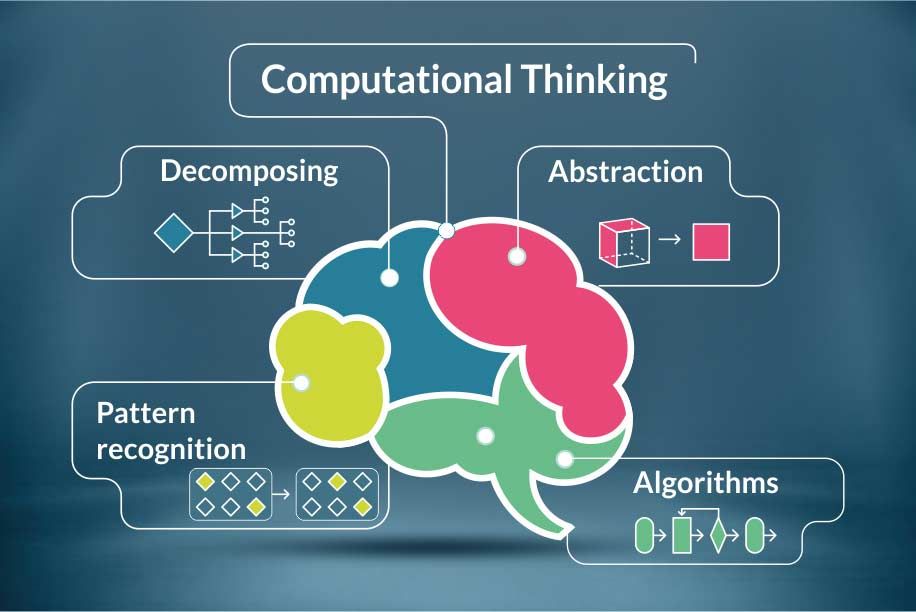@Samreen-Tahir Great 
 ..You shared very informative content. What are the other strategies can we use in our classroom, when we have no much resources in our schools?
..You shared very informative content. What are the other strategies can we use in our classroom, when we have no much resources in our schools?
-
COMPUTATIONAL THINKING
-
@Samar-Mohamed..absolutely dear

-
@FarhanMehboob ..which abilities will they have by the computational thinking?..please guide us about them.
-
Hi dear Aqsa hopefully you have good day,
Basic approach for teaching in your classroom should be Student Centred Approach, which has many sub-strategies.
Computational thinking is a way to navigate students' resolving abilities to complex calculation, data and programs.
My opinion about this approach is to start from early age of education so they students may learn this technique to resolve mathematical problems, understanding science topics, and so on.
Further for strategies in classroom please check my previous post or go through the forum topics in Inclusive Teaching.
Regards"Shaping young minds and empowering girls to become emotionally and financially independent".
-
@Samreen-Tahir sure!


-
@Samreen-Tahir I've seen just now.i got your points


-
@Samreen-Tahir Good one dear! Yes, Integrating computational thinking into education not only enhances problem-solving and analytical skills but also prepares students for a rapidly evolving digital landscape.
How can educators effectively incorporate computational thinking into various subjects to foster a more versatile and adaptive learning environment?
Tabassum Laghari
Science Teacher
Sindh, Pakistan -
@Aqsa-Khatri you need to focus on the important information, break down complex Information into smaller, create step by step solution and analyze to find error or issues in the process.
HOPE ANSWER THE QUESTION IN SINPLE WAY(FARHAN MEHBOOB)
Primary School Teacher
SINDH, PAKISTAN -
@Tabassumlaghari
Hi dear,
Computational thinking in math problems on a worksheet or in a textbook or implementing math problem solving in real life, students are already using computational thinking to solve math equations, often without recognizing it. Solving math problems, especially word problems, requires children to use computational thinking to identify the problem, break it down into steps then apply mathematical operations to find a solution.
In science experiment, scientific method requires a series of steps—formulating a hypothesis, designing an experiment, collecting data and drawing conclusions. What students might not realize is that the scientific process is an example of computational thinking in real life.Students also use computational thinking in writing, whether creative writing for fun or academic writing for class. Storytelling, for example, requires a child to organize ideas, structure narratives, and think critically about cause-and-effect relationships. Academic writing includes similar organization and structuring as well as critical thinking.
In drawing or painting, a student will plan designs and layouts for their creations. They’ll make decisions related to colors and shapes, as well as problem-solving as their design continues to progress. All these steps are part of the computational thinking process.
Hopefully this may helpful for you.
Have a good time."Shaping young minds and empowering girls to become emotionally and financially independent".
-
@Noorulain-Khatri Great!


-
@Samar-Mohamed
Hello S-A-M-A-R
 Computational thinking is a problem-solving process involving skills like decomposition, pattern recognition, abstraction, algorithm design, and evaluation. Originally rooted in computer science, it applies to various fields by providing a structured approach to solving complex problems. In education, it enhances critical thinking and problem-solving skills, while in everyday life and business, it aids in decision-making and process optimization. For bullying prevention, computational thinking can help design algorithms to detect and address harmful behavior, contributing to safer environments.
Computational thinking is a problem-solving process involving skills like decomposition, pattern recognition, abstraction, algorithm design, and evaluation. Originally rooted in computer science, it applies to various fields by providing a structured approach to solving complex problems. In education, it enhances critical thinking and problem-solving skills, while in everyday life and business, it aids in decision-making and process optimization. For bullying prevention, computational thinking can help design algorithms to detect and address harmful behavior, contributing to safer environments.
Best regards from Tunisia
Chokri
"Empowering students through engaging education, fostering environmental consciousness, and advancing scientific literacy. Committed to shaping future leaders in Life and Earth Sciences."
-
Thanks for your thoughts. How can this method work well with language learning.
Adel
-
@Samreen-Tahir You are welcome
 Dear Samreen. It is good to grow together using this forum.
Dear Samreen. It is good to grow together using this forum.(FARHAN MEHBOOB)
Primary School Teacher
SINDH, PAKISTAN -
@Samreen-Tahir
Computational thinking is a problem-solving approach that involves breaking down complex issues into smaller, manageable parts (decomposition), recognizing patterns (pattern recognition), focusing on essential information while ignoring irrelevant details (abstraction), and creating step-by-step instructions to solve problems (algorithm design). It is a key skill in computer science but also valuable in various fields and everyday problem-solving, helping to develop structured, logical approaches to challenges.
Best Regards from CHOKRI"Empowering students through engaging education, fostering environmental consciousness, and advancing scientific literacy. Committed to shaping future leaders in Life and Earth Sciences."
-
@Samreen-Tahir Enhances the ability to solve complex problems in a systematic and creative way.
-
@Bousl2336873cb4 Computational thinking is a problem-solving approach that includes breaking problems into smaller parts, recognizing patterns, creating algorithms, and thinking logically.
Tabassum Laghari
Science Teacher
Sindh, Pakistan -
@Shaista-Begum
Hello dear hopefully you have good summer vacations.
Dear computational thinking enhances the ability to solve complex problems systematically and creatively by breaking them down into smaller, manageable parts and developing logical solutions.
You may also say that it is a problem-solving process that involves logical thinking, pattern recognition, abstraction, and algorithmic thinking to find effective and innovative solutions."Shaping young minds and empowering girls to become emotionally and financially independent".